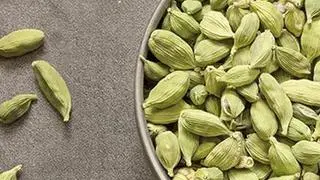Availability of good stocks of imported cloves in the country coupled with reports of bumper crop this year in other major producing and supplying countries has built up a bearish sentiment in the domestic markets.
Trade sources in the upcountry markets told BusinessLine that “huge unsold stocks are held in the markets and hence prices are falling daily. Prices will stabilise in October and we foresee some correction then.”
Record harvestsBumper crops are expected in Indonesia, Madagascar and Zanzibar. International prices are ruling at $7,000-8,000 a tonne. “New crop in Comoros has just started and likely selling pressure can push the prices down to $5,000-6,000 a tonne. Add to this, Indonesia is not buying, so world markets are under pressure,” they claimed.
Prices in the upcountry markets are currently ruling at between ₹480 and ₹650 a kg, they said.
Meanwhile, in Nagercoil — a main trading centre for cloves in South India — the prices are down to around ₹700 a kg.
Unsold stocksS Subramaniam, a grower at Nagercoil in Tamil Nadu, told Business Line that no buyers were forthcoming because of the stocks held in various consuming centres.
This phenomenon has pulled down the prices.
Sellers have also withdrawn from the market. The 2016 crop is very poor at 30 per cent of the normal crop because of unfavourable weather conditions.
However, the climatic conditions so far has been good and if such a scenario prevailed through, the 2017 crop would be a better one, he said.
However, it depends on the behaviour of the North-East monsoon that played havoc late last year, he added.
Rising importsSharp fall in indigenous production of this commodity has, in fact, more than doubled its imports in five years.
If in 2010-11 the imports were at 7,000 tonnes valued at ₹153.37 crore they were at 14,950 tonnes valued at ₹771.13 crore in 2014-15, according to Spices Board sources.
Farmers in Idukki district of Kerala where it was widely cultivated until about two decades ago have cut down the trees as the prices continuously remained below remunerative levels and shifted to other crops.
During 2013-14 the production from 912 hectares of plantations in Kerala stood at 68 tonnes.
Another major area of its cultivation in the country is the Nagercoil region where from 869 hectares 816 tonnes were produced in 2013-14.
India is a net importer of this commodity with an annual demand ranging between 15,000 and 20,000 tonnes, trade sources claimed. Imports are from Sri Lanka, Madagascar, Comoros, Zanzibar and Indonesia.







Comments
Comments have to be in English, and in full sentences. They cannot be abusive or personal. Please abide by our community guidelines for posting your comments.
We have migrated to a new commenting platform. If you are already a registered user of TheHindu Businessline and logged in, you may continue to engage with our articles. If you do not have an account please register and login to post comments. Users can access their older comments by logging into their accounts on Vuukle.